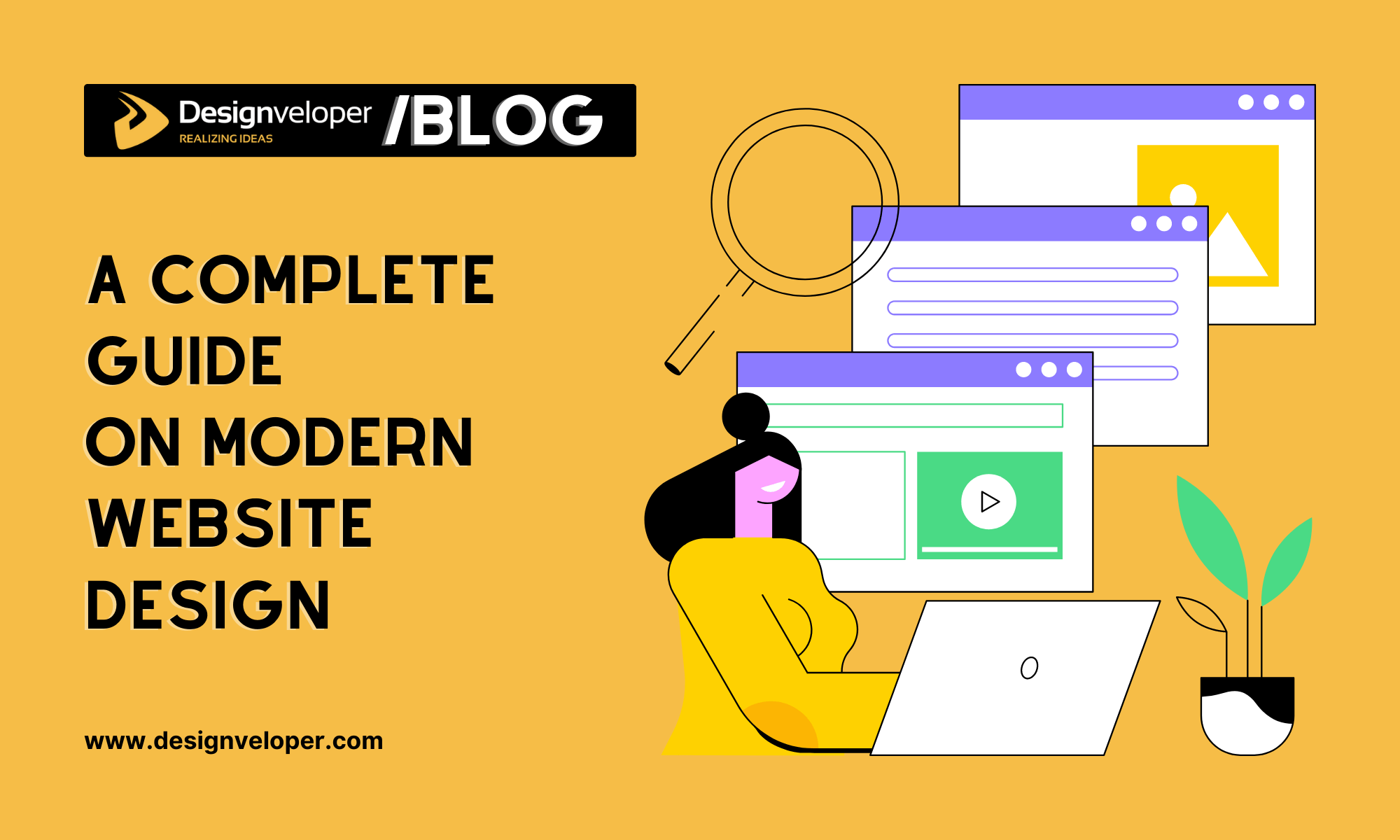The Role of User-Centered Website Design in Increasing Customer Retention
The Role of User-Centered Website Design in Increasing Customer Retention
Blog Article
The Ultimate Guide to Modern Site Style Trends
In the ever-evolving electronic landscape, modern internet site layout trends play a vital role fit customer experience and engagement. From the rise of minimal design principles that focus on simplicity to the impact of bold typography in defining brand identity, each element adds to a natural on the internet presence. The focus on mobile-first and responsive methods, alongside ingenious microinteractions, additionally improves use. Moreover, the growing concentrate on sustainable web layout methods shows a dedication to environmental responsibility. These trends jointly raise vital concerns concerning the future of efficient website design and what it implies for consumers and businesses alike.
Minimalist Layout Principles
Minimal design principles emphasize the concept that much less is much more, promoting for simpleness and functionality in visual interaction. This approach strips away unnecessary aspects, concentrating instead on important parts that convey the intended message properly. By prioritizing clearness, minimal style boosts individual experience, permitting visitors to browse sites effortlessly.
Core tenets of minimal design consist of making use of ample white space, which develops a sense of balance and company. This negative room not just guides the customer's interest to crucial components yet likewise fosters a relaxing visual ambience. In addition, a minimal color combination is frequently used, using soft shades or single systems to maintain visual communication and stop frustrating the individual.
Typography plays a critical function in minimal style, where readable fonts are chosen for their simplicity and effectiveness in interacting web content. Graphics and photos are conserved, making sure that they offer a purpose instead than sidetrack from the total message. Eventually, minimalist style concepts cultivate a concentrated atmosphere that motivates users to involve with the web content, boosting the overall efficiency of modern-day internet site design. This trend mirrors a growing gratitude for thoughtful, user-centric appearances in electronic areas.
Bold Typography Selections
Accepting strong typography selections has actually ended up being a specifying characteristic of contemporary internet site layout, as it properly records focus and shares strong messaging. Developers are increasingly making use of typography not simply as a functional component however as an essential aesthetic element that enhances the total visual and customer experience.

Additionally, the association of bold typography with minimal design concepts permits for striking contrasts, boosting readability while maintaining aesthetic charm. Making use of whitespace around bold text better stresses its relevance, guaranteeing that the message resonates with the audience.
As electronic landscapes become more affordable, leveraging vibrant typography enables brand names to separate themselves and leave an enduring perception. The careful option of typefaces and their application can stimulate emotions, establish tone, and drive activity, making vibrant typography an indispensable device in modern website style. Eventually, it is recommended you read an effective method to enhance narration and make sure that essential messages are not only seen but also really felt.
Responsive and Mobile-first Design
Mobile-first and receptive design has emerged as an essential concept in modern internet site advancement, showing the boosting reliance on smart phones for accessing online web content. As individual behavior shifts in the direction of mobile surfing, developers must prioritize developing experiences that adjust effortlessly across various display dimensions and resolutions.
A responsive layout guarantees that a website immediately readjusts its design, images, and performance based on the tool being utilized. Mobile-first style advocates for developing sites originally for smaller displays, ultimately scaling up to bigger displays.
Carrying out receptive and mobile-first principles not just caters to individual preferences however also lines up with search engine optimization (SEARCH ENGINE OPTIMIZATION) methods. Major online search engine, like Google, focus on mobile-friendly internet sites in their rankings, making it crucial for services to take on these design techniques. In an affordable digital landscape, accepting mobile-first and responsive style is not just an alternative; it is crucial for making sure access and engagement with a about his varied audience.
Involving Microinteractions
Microinteractions play a critical function in boosting customer engagement and total internet site experience, specifically in the context of responsive and mobile-first style. These subtle design aspects provide immediate feedback to customers, making interactions more enjoyable and user-friendly. Examples include button computer animations, alert informs, and packing signs, which not only overview users however also develop a sense of link with the interface.
Integrating interesting microinteractions can considerably enhance functionality by reducing cognitive tons. When individuals get acoustic or aesthetic responses upon performing activities, such as clicking a button or submitting a type, they feel much more certain in their options. This promotes a smoother navigation experience, eventually enhancing customer retention.

As web site design trends proceed to progress, the significance of microinteractions can not be overstated. They work as the refined yet powerful touchpoints that change regular communications right into amazing experiences, thereby elevating the total performance of contemporary website design.
Lasting Website Design Practices
Lasting web style methods are ending up being significantly necessary as the electronic landscape grows and environmental concerns climb. Developers and designers are acknowledging their duty to produce sites that not only offer customer needs but additionally lessen ecological influence. This strategy includes numerous crucial methods.
To start with, optimizing energy usage is paramount. Websites should be developed to fill promptly and efficiently, which minimizes server energy usage and improves customer experience. Strategies such as image compression, decreasing HTTP demands, and using contemporary coding practices contribute considerably to this objective.
Secondly, picking environment-friendly hosting providers is important - website design. Numerous hosting business are now powered by eco-friendly power resources, enabling websites to operate in a more sustainable manner. This option reflects a commitment to decreasing carbon impacts
Moreover, embracing a minimalist layout can enhance sustainability. Fewer components on a page lead to less data transfer, which not just speeds up filling times but likewise saves sources.
Lastly, advertising electronic availability guarantees that internet sites reach a bigger target market without unnecessary bloat, straightening user experience with environmental responsibility. By incorporating these lasting techniques, internet developers can contribute favorably to both customer involvement and the earth's wellness.
Final Thought
In recap, contemporary internet site layout fads highlight the integration of minimal concepts, strong typography, and receptive layout to boost individual experience. Adopting these fads is crucial for creating impactful electronic experiences that reverberate with customers in an increasingly affordable on the internet landscape.
In the ever-evolving electronic landscape, modern website layout trends play a vital role in forming customer experience and interaction. By prioritizing clarity, view publisher site minimal layout improves customer experience, permitting visitors to navigate websites easily.
Eventually, minimal design principles grow a focused environment that encourages individuals to involve with the content, enhancing the total effectiveness of modern-day web site style.Microinteractions play a critical duty in improving individual involvement and overall site experience, particularly in the context of responsive and mobile-first design.In summary, contemporary web site layout fads emphasize the assimilation of minimal concepts, strong typography, and responsive design to improve individual experience.
Report this page